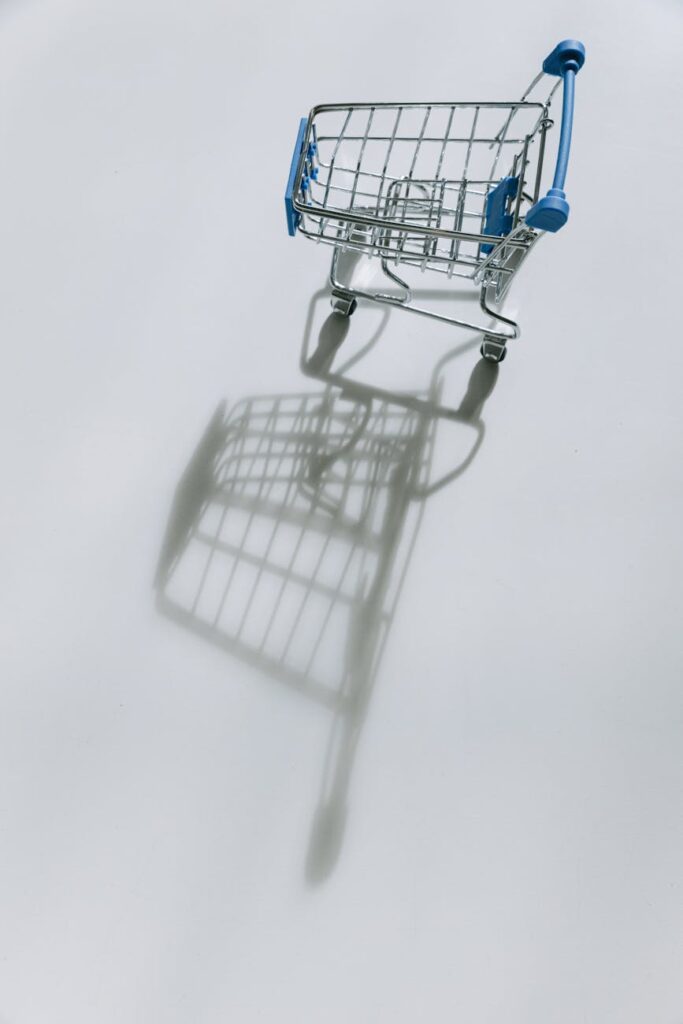Ultimate Guide: Step-by-Step Guide to Starting a Dropshipping Business
Ever dream of running your own online store? The vision of selling products, building a brand, and achieving financial freedom is incredibly appealing. But then reality hits. The thought of buying thousands of dollars in inventory, renting a warehouse, and dealing with shipping logistics can be overwhelming. It’s enough to stop most aspiring entrepreneurs in their tracks. But what if there was another way? A way to get all the benefits of e-commerce without the massive upfront investment and logistical headaches? Well, there is. Welcome to the world of dropshipping. This guide is your complete roadmap to starting a dropshipping business from the ground up, even if you have zero experience. We’re going to cover everything. Seriously. Let’s get started.
Key Takeaways:
- Dropshipping is a low-risk e-commerce model where you sell products without ever holding inventory.
- Success hinges on choosing a profitable, low-competition niche. Don’t just sell what you love; sell what people are actively buying.
- Finding a reliable supplier is non-negotiable. Your supplier’s performance directly impacts your brand’s reputation.
- Your online store is your digital storefront. Focus on a clean design, high-quality product images, and a seamless checkout process.
- Marketing is not an afterthought; it’s the engine of your business. You must have a solid plan to drive traffic and convert visitors into customers.
- Don’t ignore the legal requirements. Setting up your business correctly from the start will save you major headaches later.
What is Dropshipping (and Is It Still Worth It in 2024?)
Before we dive into the ‘how,’ let’s make sure we’re clear on the ‘what.’ Dropshipping is an order fulfillment method where a store doesn’t keep the products it sells in stock. It’s a simple, yet brilliant, model.
Here’s how it works in three steps:
- A customer places an order on your online store and pays you the retail price.
- You forward that order (and the customer’s shipping details) to your supplier and pay them the wholesale price.
- The supplier then ships the product directly to the customer, under your brand name if you’ve arranged it.
Your profit is the difference between the retail price your customer paid and the wholesale price you paid the supplier. You never see or handle the product. No inventory. No warehousing. No shipping boxes. It’s a beautifully simple concept.
The Pros and Cons
Is dropshipping a perfect, get-rich-quick scheme? Absolutely not. Like any real business, it has its ups and downs.
- Pros: Extremely low startup costs, minimal risk, work from anywhere, wide product selection, easy to scale.
- Cons: Lower profit margins, high competition, inventory syncing issues, you’re reliant on the supplier for quality and shipping, customer service can be complex.
So, is it still profitable? Yes, absolutely. But the game has changed. You can’t just throw up a generic store with products from AliExpress and expect to succeed anymore. Today, success is about building a real brand, providing value, and mastering marketing. It requires work, but the opportunity is very real.
Step 1: Choose Your Niche (The Make-or-Break Decision)
This is arguably the most critical step in the entire process of starting a dropshipping business. Your niche is the specific segment of the market you’re going to target. Choosing the right one sets you up for success; choosing the wrong one is a fast track to failure.
Brainstorming Niche Ideas
Don’t just pick something you’re passionate about. Passion helps, but profitability is what pays the bills. You need to find the sweet spot between your interests and market demand. Start by brainstorming:
- Your Hobbies & Interests: What do you know a lot about? Fishing, gaming, yoga, knitting? Your expertise can be a huge advantage.
- Problems You Can Solve: Think about products that solve a specific problem. Back pain relief products, home organization solutions, pet anxiety vests.
- Trends & Hot Markets: Use tools like Google Trends, check out popular Kickstarter campaigns, and see what’s buzzing on social media platforms like TikTok and Instagram. Look for products with an upward trajectory.
Validating Your Niche
Once you have a list of ideas, it’s time to do some research. You need data, not just a gut feeling. Here’s how to validate your ideas:
- Check Search Volume: Use a tool like Google Keyword Planner (it’s free with a Google Ads account) or Ubersuggest to see how many people are searching for keywords related to your niche. You want to see consistent, healthy search volume.
- Analyze the Competition: Google your potential niche keywords. Who are the top players? Are they massive brands like Amazon or smaller, independent stores? A bit of competition is good—it proves there’s a market. But if it’s dominated by giants, you might struggle to get a foothold.
- Gauge Profitability: Browse potential supplier sites (like AliExpress) to get an idea of the product cost. Can you sell these items for at least a 2.5x-3x markup and still be competitive? Remember to factor in marketing costs and transaction fees.
- Look for Niche Communities: Are there active Facebook groups, Reddit subreddits, or online forums dedicated to your niche? This is a great sign of an engaged audience and a built-in place to market your products.
The ideal niche has passionate customers, is not dominated by major brands, has a good number of products to sell, and offers healthy profit margins. Take your time here. It’s better to spend an extra week on research than to build a business around a failing idea.
Step 2: Find Reliable Dropshipping Suppliers
Your supplier is your silent business partner. They control product quality, shipping times, and packaging. A great supplier can make your business soar; a bad one will sink it. Fast. You’re putting your brand’s reputation in their hands, so choose wisely.

Where to Look for Suppliers
There are several avenues for finding suppliers, each with its own pros and cons:
- Supplier Directories: These are curated databases of pre-vetted suppliers. They often charge a fee but can save you a ton of time and risk. Popular options include SaleHoo, Worldwide Brands, and Doba.
- Supplier Marketplaces: These are massive platforms connecting you with thousands of individual suppliers, mostly based in China. The most famous is AliExpress. Apps like CJdropshipping and Zendrop integrate with these platforms to make the process smoother. They are great for getting started but require careful vetting.
- Directly with Manufacturers: If you find a product you like, you can try to contact the manufacturer directly to see if they offer dropshipping. This can lead to better prices but is often more difficult to arrange.
How to Vet a Potential Supplier
Never, ever just pick the cheapest supplier. Do your homework. Before you commit to anyone, you must:
- Order Samples: This is non-negotiable. You need to personally test the product quality, inspect the packaging, and time the shipping. How long did it actually take to arrive? Is the product as described? This is your chance to experience what your customer will experience.
- Read Reviews and Ratings: Look at their store ratings, product reviews, and how long they’ve been in business. Look for consistently positive feedback.
- Communicate With Them: Send them a message with a few questions. How responsive are they? Is their English clear and professional? Do they understand dropshipping? A slow or unhelpful response is a massive red flag.
- Check Their Shipping Policies: Understand their processing times (how long it takes them to ship an order out) and their average shipping times to your target countries. Look for suppliers who offer reliable shipping options like ePacket (if available).
Step 3: Build Your E-commerce Store (Your Digital Storefront)
Now for the fun part: building the place where you’ll actually make sales! Your website is your 24/7 salesperson. It needs to be professional, trustworthy, and easy to navigate.
Choosing Your Platform
For beginners, there are two main contenders:
- Shopify: This is the undisputed king of e-commerce platforms for a reason. It’s incredibly user-friendly, designed specifically for selling online, and has a massive app store that makes integrating with dropshipping suppliers a breeze. It’s an all-in-one solution that handles hosting, security, and payments. While it has a monthly fee, it’s worth every penny for the ease of use.
- WooCommerce: This is a free plugin for WordPress. It’s more flexible and customizable than Shopify, but it has a much steeper learning curve. You’ll be responsible for finding your own hosting, security, and managing updates. It can be cheaper in the long run but requires more technical know-how.
Our recommendation for beginners? Start with Shopify. You can focus on marketing and selling, not on fixing technical website issues.
Essential Store Elements
No matter which platform you choose, your store needs a few key things to build trust and convert visitors:
- A Professional Domain Name: Ditch the `.myshopify.com` address. A custom domain (e.g., `www.yourbrand.com`) is cheap and makes you look legitimate.
- High-Quality Product Photos and Videos: Since customers can’t touch the product, your visuals have to do all the work. Use the best images your supplier provides, or even order the product and take your own.
- Compelling Product Descriptions: Don’t just copy and paste the supplier’s generic text. Write your own descriptions that focus on the benefits for the customer. Tell a story. Solve their problem.
- Essential Pages: You must have an ‘About Us’ page to tell your brand’s story, a ‘Contact Us’ page, a clear ‘Shipping Policy’, and a ‘Refund Policy’. These pages are crucial for building trust.
- A Seamless Checkout: Make it as easy as possible for people to give you their money. Offer multiple payment options, including PayPal and major credit cards.
Step 4: Craft a Solid Business & Marketing Plan
You’ve built a beautiful store. Now what? You can’t just wait for customers to find you. You have to go out and get them. This is where most new dropshippers fail. They spend all their time on the store and zero time on marketing.
Setting Up Your Marketing Channels
You don’t need to be on every platform. Pick one or two to start and master them.
- Social Media Marketing: Platforms like Facebook, Instagram, and TikTok are fantastic for dropshipping. You can use eye-catching video ads, influencer marketing, and build a community around your brand. Facebook Ads are powerful but have a learning curve.
- Search Engine Optimization (SEO): This is a long-term strategy. It involves optimizing your site and creating content (like blog posts) to rank in Google search results. It’s free traffic, but it takes time to see results.
- Content Marketing: Start a blog or a YouTube channel related to your niche. Provide valuable information that helps your target audience. For example, if you sell coffee gear, write articles about different brewing methods. This builds trust and authority.
- Email Marketing: This is a non-negotiable asset. From the very first day, you should be collecting emails. Offer a 10% discount in exchange for an email address. Email is the best way to build a relationship with customers and drive repeat purchases.
Pro Tip: Your first sale will most likely come from a paid ad. Don’t be afraid to invest a small, controlled budget ($10-$20 per day) into Facebook or Instagram ads to get your first customers and validate your product. Analyze the data and learn what works.
Step 5: Handle the Legal Stuff (Don’t Skip This!)
This part is boring, but it’s incredibly important. Operating as a legitimate business protects you personally and keeps you out of trouble.

Business Structure
You’ll need to decide how to register your business. The two most common options for beginners are:
- Sole Proprietorship: This is the easiest and cheapest to set up. You and the business are legally the same entity. The downside is that you are personally liable for any business debts or lawsuits.
- Limited Liability Company (LLC): This creates a separate legal entity for your business. It protects your personal assets (like your house and car) if the business is sued. It’s a bit more expensive and complex to set up, but it’s the recommended route for most serious entrepreneurs.
Finances and Taxes
Keep your business finances separate from your personal finances from day one. Open a dedicated business bank account. It makes bookkeeping a million times easier. You’ll also need to understand sales tax. This is complex and varies by state and country. Platforms like Shopify have tools to help you calculate and collect sales tax automatically. It’s highly recommended to consult with an accountant to make sure you’re doing everything correctly.
Step 6: Launch and Market Your Store
The moment of truth! It’s time to switch your store from ‘password protected’ to ‘live’ and start driving traffic. But before you do, run through a quick pre-launch checklist:
- Double-check all your links and pages.
- Make a test purchase to ensure the checkout process is smooth.
- Ensure your marketing pixels (like the Facebook Pixel) are installed correctly.
- Review your product pages for any typos or errors.
Processing Your First Order
Congratulations! When that first order notification comes in, it’s an amazing feeling. Here’s what you do:
- You’ll receive the customer’s payment and order details.
- Go to your supplier’s website or app.
- Place the exact same order, but use your customer’s shipping address.
- Pay the supplier their wholesale price.
- The supplier will process and ship the order. They will send you a tracking number, which you should then forward to your customer.
Many dropshipping apps automate this process, but it’s crucial to understand the manual steps.
The Importance of Customer Service
Excellent customer service is how you stand out. Respond to emails quickly and professionally. Be transparent about shipping times. When something goes wrong (and it will), take ownership of the problem and find a solution. A happy customer can become a repeat customer and a brand advocate. A single angry customer can leave a negative review that hurts your business for months.
Conclusion
Starting a dropshipping business is not a shortcut to instant wealth, but it is one of the most accessible ways to enter the world of e-commerce. It’s a journey that requires research, dedication, and a willingness to learn and adapt. By following these steps—choosing a smart niche, finding a trustworthy supplier, building a professional store, and marketing effectively—you can build a real, sustainable business. The initial steps might feel daunting, but the key is to take it one step at a time. Your dream of running an online store is within reach. Now go make it happen.
FAQ
How much money do I need to start dropshipping?
While it’s a low-cost model, it’s not free. You should budget at least $300-$500 for initial costs. This covers your e-commerce platform subscription (like Shopify), a domain name, ordering product samples, and an initial budget for marketing and advertising. The biggest variable is your ad spend.
Is dropshipping legal?
Yes, dropshipping is a completely legal and legitimate business model used by countless businesses worldwide, including major retailers. As long as you operate honestly, set up your business legally (e.g., as an LLC or sole proprietorship), and meet your tax obligations, it’s perfectly legal.
How long does it take to get the first sale?
This varies wildly. Some people get their first sale within a day of launching their first ad campaign. For others, it might take a few weeks of tweaking their store, products, and marketing. The key is to drive targeted traffic to your store. Without traffic, you won’t get any sales. Typically, with a small, focused ad campaign, you can expect to see your first sale within the first week of launching.



 10 Best Online Side Hustles to Start in 2025
10 Best Online Side Hustles to Start in 2025  Flipping Domains: A Beginner’s Guide to Profit (2024)
Flipping Domains: A Beginner’s Guide to Profit (2024)  Make Money with Instagram Reels: 7 Proven Strategies
Make Money with Instagram Reels: 7 Proven Strategies  Make Money Testing Websites: A 2024 Beginner’s Guide
Make Money Testing Websites: A 2024 Beginner’s Guide  Become a Virtual Assistant From Home: A Beginner’s Guide
Become a Virtual Assistant From Home: A Beginner’s Guide  Create & Sell WordPress Themes: A Complete 2024 Guide
Create & Sell WordPress Themes: A Complete 2024 Guide  How to Set Up a Node: The Ultimate Guide
How to Set Up a Node: The Ultimate Guide  Crypto Arbitrage Trading: A Beginner’s Guide (2024)
Crypto Arbitrage Trading: A Beginner’s Guide (2024)  The Business of NFTs: How Top Brands Are Using Them
The Business of NFTs: How Top Brands Are Using Them  What Are ZK-Proofs? A Guide to Blockchain Privacy
What Are ZK-Proofs? A Guide to Blockchain Privacy  DeFi’s Hurdles: Security, Scalability & Regulation
DeFi’s Hurdles: Security, Scalability & Regulation  How to Read a Crypto Whitepaper: A Beginner’s Guide
How to Read a Crypto Whitepaper: A Beginner’s Guide